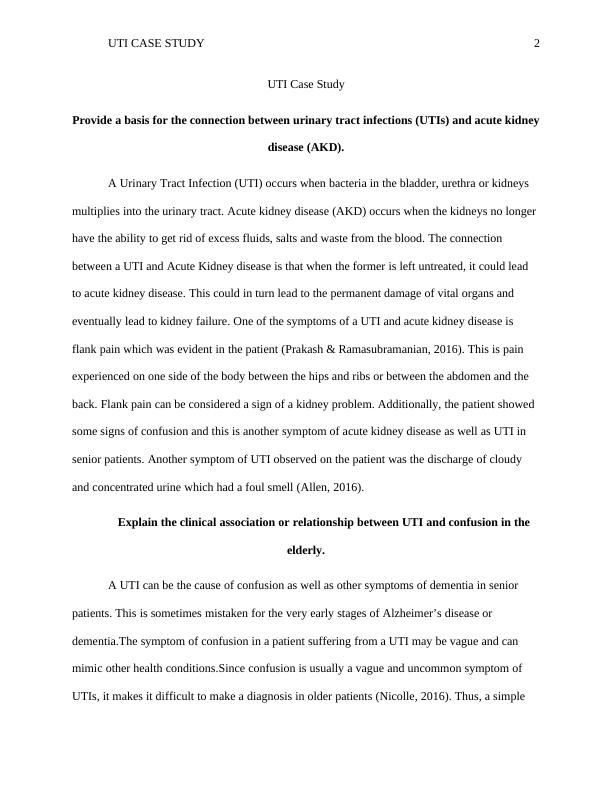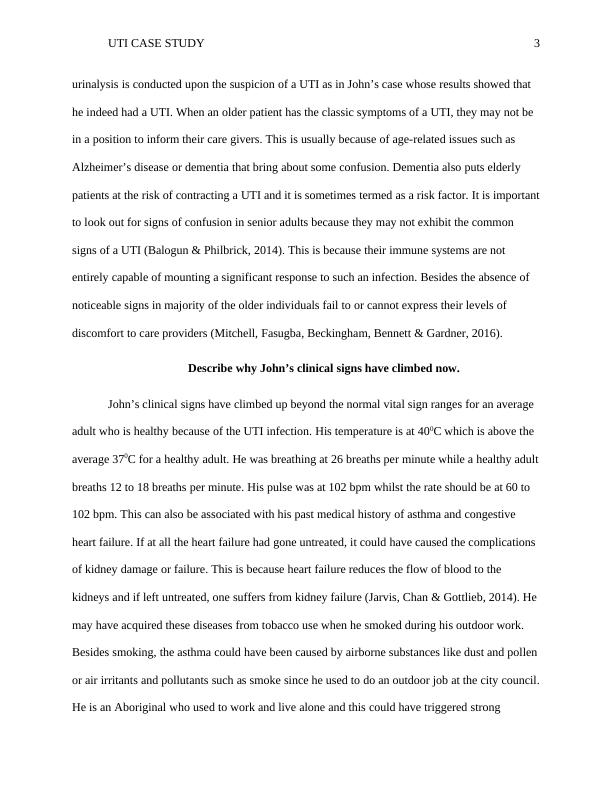Ask a question from expert
UTI(Urinary Tract Infection) Case Study
6 Pages1409 Words529 Views
Added on 2019-11-08
UTI(Urinary Tract Infection) Case Study
Added on 2019-11-08
BookmarkShareRelated Documents
End of preview
Want to access all the pages? Upload your documents or become a member.
Connection between urinary tract infection (UTI) & acute kidney disease (AKD) : Case Study
|7
|1893
|65
Urinary Tract Infections in Older Persons- Report
|9
|2147
|231
NUR241 Chronic Urinary Tract Infections Assignment
|5
|575
|58
Report of Introduction 2022
|2
|309
|49
Pathogenesis of Clinical Manifestation PDF
|7
|1840
|117
Urosepsis: Pathogenesis, Nursing Strategy, and ABG Analysis
|8
|2294
|341


